Posts Tagged: walnut twig beetle
UC Davis Students Carry on Legacy of Walnut Twig Beetle Expert Steve Seybold
The legacy of chemical ecologist Steven Seybold thrives with the recent publication of two papers by two of his UC Davis...
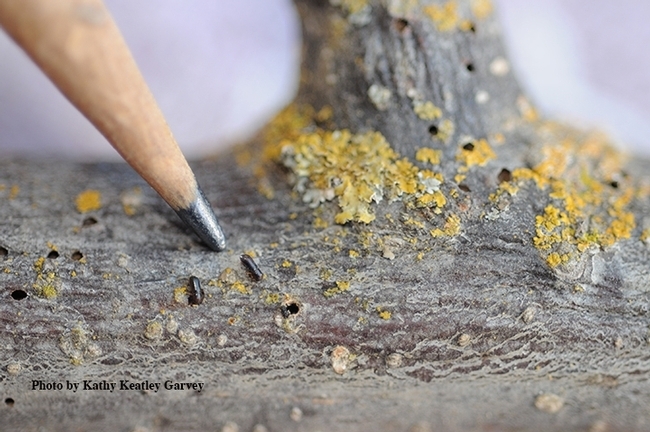
The walnut twig beetle, Pityophthorus juglandis, in association with a fungus, causes the thousand cankers disease. (Photo by Kathy Keatley Garvey)
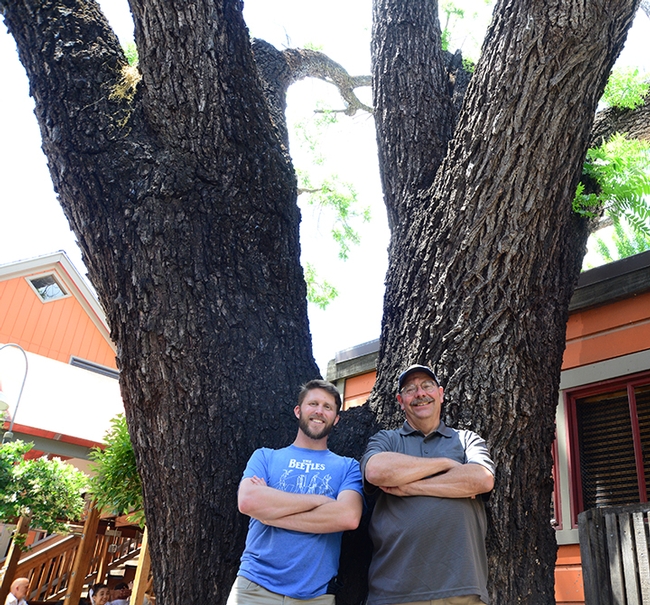
Forest entomologist Jackson Audley (left) with his mentor, the late Steve Seybold, in front of an infested tree in Davis, Calif. The walnut twig beetle, in association with a fungus, causes thousand cankers disease. (Photo by Kathy Keatley Garvey)
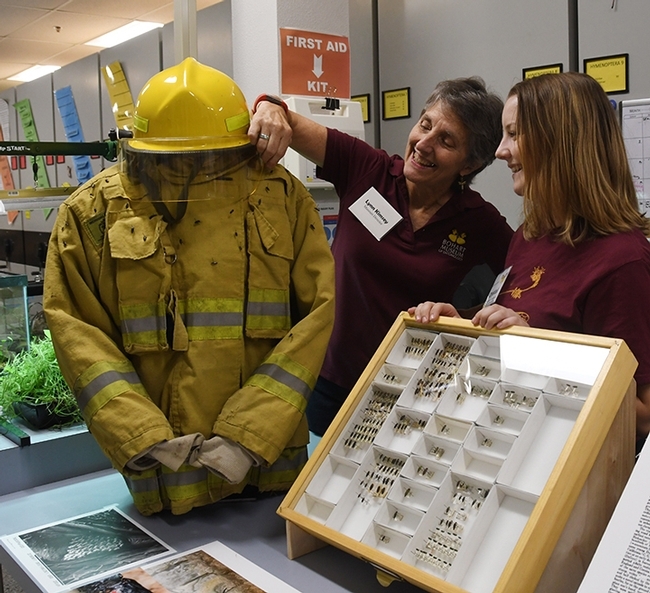
UC Davis doctoral student Crystal Homicz (right) participating in a forest entomology open house at the Bohart Museum of Entomology. With her is Professor Lynn Kimsey, director of the Bohart. (Photo by Kathy Keatley Garvey)
Jackson Audley: Targeting the Walnut Twig Beetle
Doctoral candidate and forest entomologist Jackson Audley of the UC Davis Department of Entomology and Nematology, targets an invasive bark beetle...
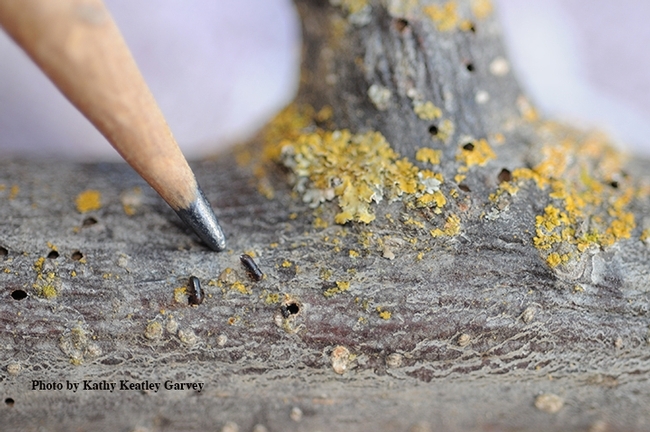
The walnut twig beetle is about the size of a grain of rice. In association with the fungus, Geosmithia morbida, it causes the insect-pathogen complex known as "thousand cankers disease." (Photo by Kathy Keatley Garvey)
Forest Entomologist/Chemical Ecologist Steven Seybold: 1959-2019
We are all saddened by the death of noted forest entomologist and chemical ecologist Steven Jon Seybold, a lecturer and researcher with the UC Davis...
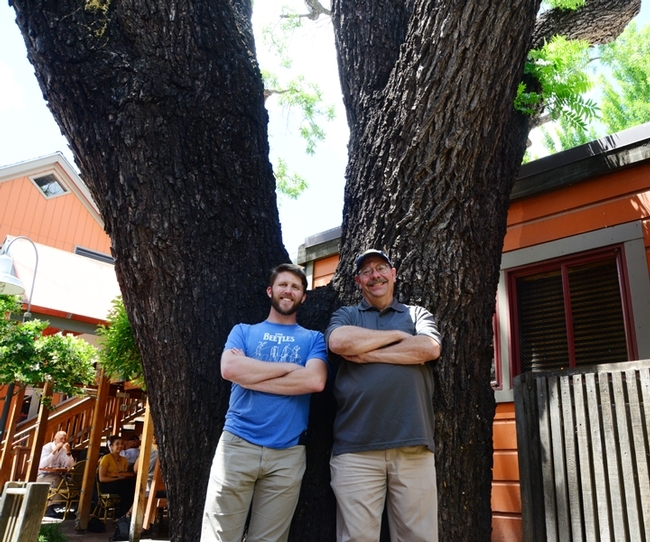
Forest entomologist and chemical ecologist Steve Seybold and doctoral student Jackson Audley by a downtown Davis tree with thousand cankers disease. (Photo by Kathy Keatley Garvey)
A Sign of the Times: Why This Black Walnut Tree Is Dying
If you've ever walked into the courtyard on the 100 block of E Street in downtown Davis, Calif., you've probably noticed the massive black walnut...
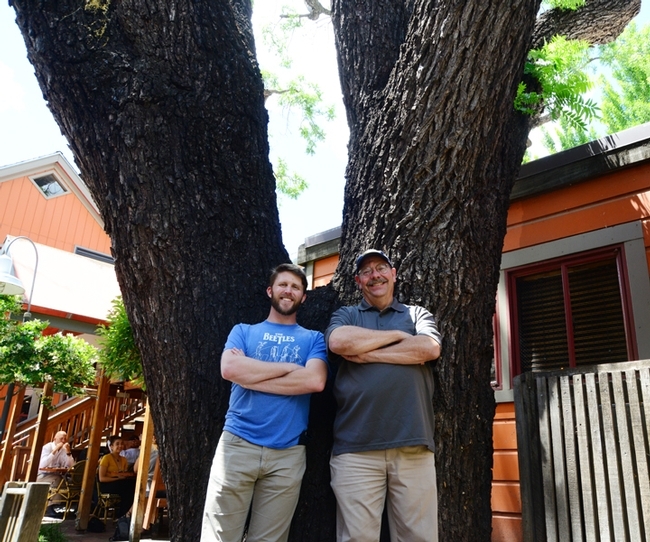
Forest entomologists Steve Seybold (right) and Jackson Audley stand by a 150-year-old black walnut tree on the 100 block of E Street. It is dying of thousand cankers disease. (Photo by Kathy Keatley Garvey)
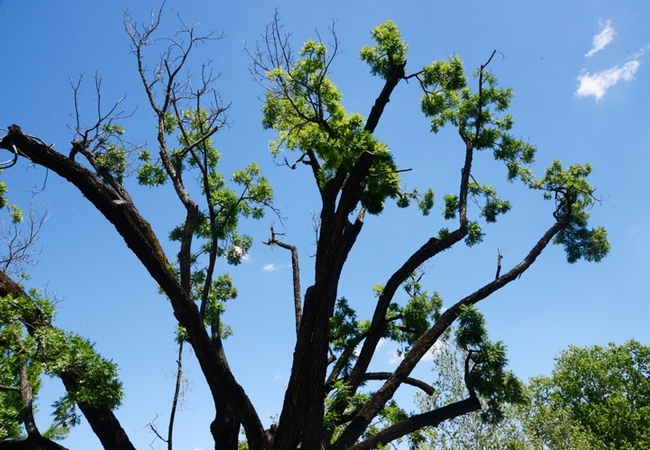
Walnut twig beetles tunnel into branches and trunks of walnut (Juglans) where they create galleries for mating and reproduction. In association with a canker producing fungus, Tthey cause a disease known as thousand cankers disease. This tree is in downtown Davis, Calif. (Photo by Kathy Keatley Garvey)
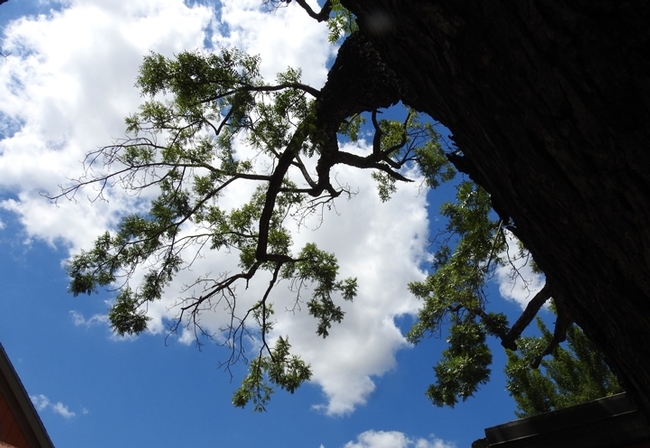
This massive, 150-year-old black walnut tree on the 100 block of E Street, Davis, is dying of thousand cankers disease. (Photo by Kathy Keatley Garvey)
Jackson Audley: A Case Study with the Walnut Twig Beetle
So tiny and so destructive. It's about the size of a grain of rice but it's a killer. That's the walnut twig beetle, Pityophthorus juglandis, which...
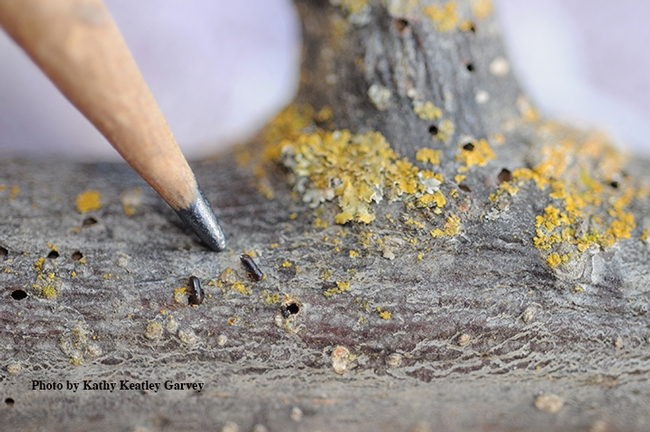
The walnut twig beetle is about the size of a grain of rice. (Photo by Kathy Keatley Garvey)

